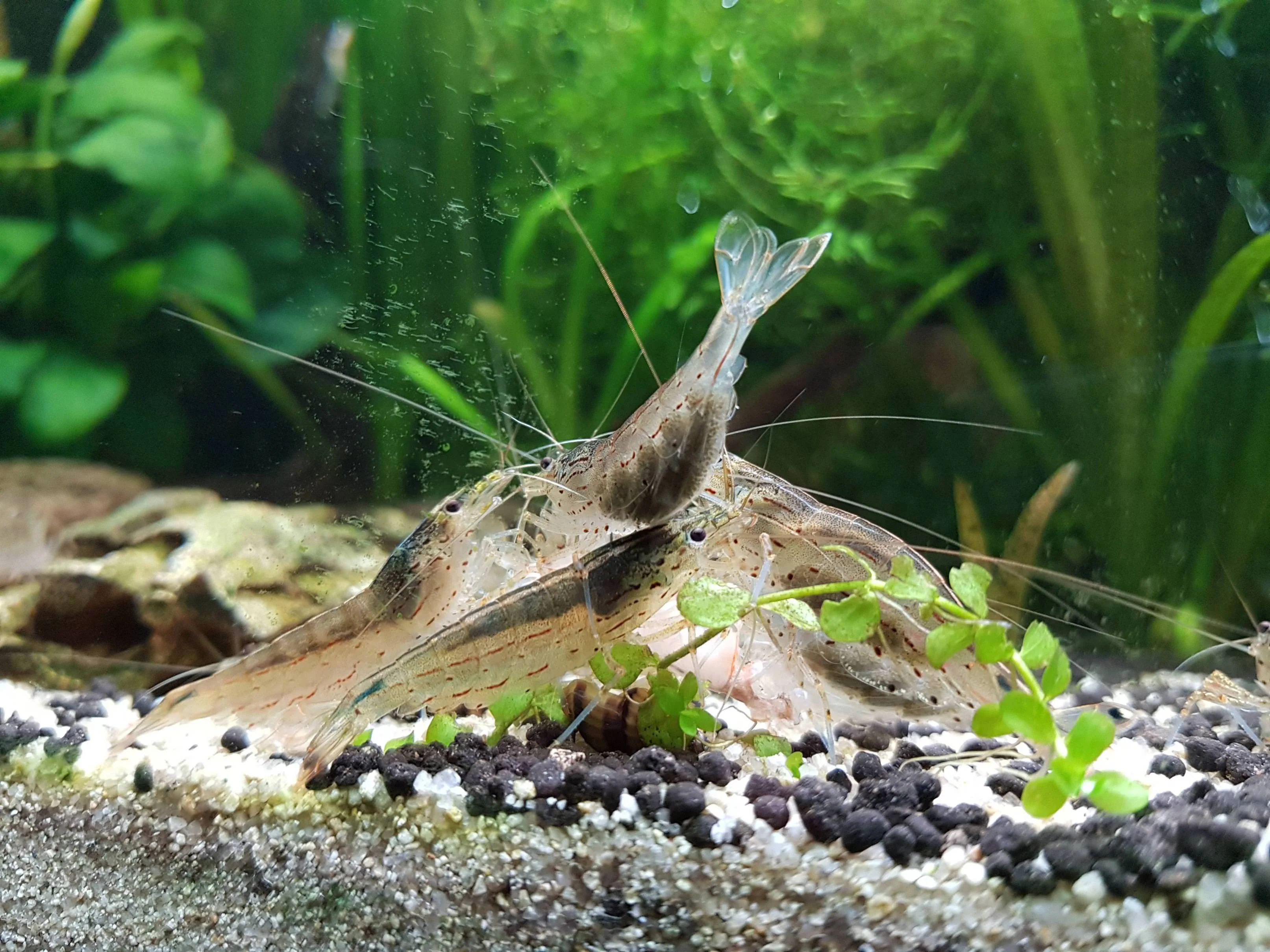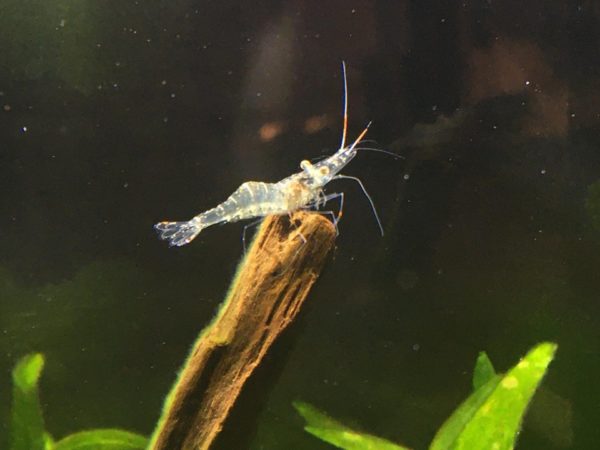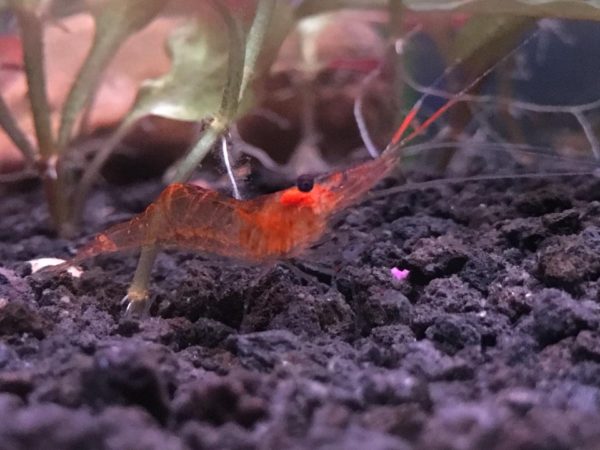It might be disappointing when your shrimp die just a few days after you bring them home. A ghost shrimp’s lifespan typically ranges from a few weeks to a year. Nobody can guarantee that each shrimp will live for a year. Even if you’ve set up a perfect setting for them, they may succumb to the elements soon.
If you’re reading this, I’m guessing you’ve tried to keep ghost shrimp in the past or are currently attempting to keep ghost shrimp and are seeking a handful of reasons why they’ve died and how to prevent them from dying.
You’ve come to the right spot because, in this post, I’ll go through a variety of reasons why ghost shrimp die in aquariums, some helpful ideas on how to keep them alive in the future, and perhaps some reasons why you should retain them.
Table of Contents
Possible Reasons for Ghost Shrimp Death
The most important point to remember from this article is to make sure you understand what you’re putting in your aquarium. Do your research before adding an element to the aquarium. Make sure you’re continuously washing and not transferring other people’s goods to your aquarium, for example, don’t forget to switch the water when adding new fish.

Inadequate water factors like pH, temperature, and ammonia cause ghost shrimp to die. Heavy metals like copper and lead, which you might have put in the tanks, are likely to cause this. In certain situations, however, the shrimp just die due to insufficient acclimation.
Factors that cause the death of the ghost shrimp are listed below.
Mistakes In Setting Up the Tank
Whether you got your tank from an internet marketplace, a local buying forum, or even a friend who used it as a fish tank, here’s something you need to think about.
First and foremost, make sure the silicone is the correct color. If the silicone appears to be dyed or stained, it is conceivable to have absorbed a drug or chemical. Certain harmless drugs for those aquatic species are sometimes toxic to shrimp and invertebrates. These items might leak into your freshwater if people previously used them in the tank.
Scrape any residue from the tank and clean it with salt and vinegar; wash it well. You can also use a cleaning solution as long as you thoroughly rinse it with de-ionized water until you leave no sign of bleach in the water.
Wrong Water Parameters
We strongly advise you to avoid putting ghost shrimp in tanks with incorrect specifications. They can’t withstand a pH or temperature that’s greater or lower than what they need. Ghost shrimps are very sensitive compared to normal fish, and the incorrect parameters will cause stress, eventually killing the shrimp.
Parameter shifts that are too drastic are also problematic. You can’t aid a ghost shrimp in a dirty tank by raising the temperature, pH, or hardness. You will harm the organisms as a result of the quick change. The most common cause of multiple ghost shrimp deaths is poor conditions.
Improper Feeding of The Ghost Shrimp
There are three things you need to think about when it comes to food. To begin, overfeeding your shrimp can lead to their death. Secondly, you can starve them to death by underfeeding them. This occurs when the amounts you offer them are insufficient.
Finally, you may kill shrimp by feeding them a diet lacking essential nutrients. As a result, they will be more susceptible to infections that could eventually kill them.
Overcrowded Tank
If you have too many ghosts shrimp and fish and force them to share a small tank, the stress caused by the overcrowding aquarium will kill the shrimp by exposing them to diseases and toxins.
Small tanks can also be difficult to keep clean. They allow harmful element concentrations to rise at a considerably faster rate. In addition, they promote the spread of illness.
Improper Maintenance
Is your tank well-kept? Do you replace the water regularly? Have you cleaned the water of trash and dead organisms? If you don’t, ammonia and nitrite levels will rise, killing your ghost shrimp.
Cycling, which is normally a long procedure that can take many weeks, would be beneficial. A tank that you haven’t cycled, on the other hand, will allow ammonia and nitrite levels to rise and fall until your ghost shrimp dies.
If Ghost Shrimp Fails in Acclimatization
This is when you should think about the store where you purchased your ghost shrimp. Before you put new shrimp in the water, you should usually acclimatize them. On the other hand, imported shrimp have a hard time adjusting to their new surroundings.
Many ghosts shrimp imported from other countries are wild-caught. They are then confined to a sack for several days or weeks before being transferred to a tank by their new owner. As a result, even if you acclimated them beforehand, they may perish when you put them in the tank. Avoid imported shrimp if at all possible.
If You Introduce Toxins to The Ghost Shrimp
Water in the tank contains minerals in the form of chlorine, chloramine, and small traces of metals in the water. If silicon is present in the water, it will lead to poisoning the fish, and sometimes the fish will die.
Tips to Prevent Ghost Shrimp Death
A simple and effective way to prevent ghost shrimp’s death is to keep them in a good, happy, and stress-free environment.
#1 Maintain the Water Affecting Parameters
Maintain it to the right value and continuously test the water with API Fresh Water Master Test Kit .
- Temperature – 65 to 85 degrees F
- pH – 6 to 8.
- Hardness –3 to 10dGH or 3 to 15dKH
- Nitrates – Less than 20ppm.
- Ammonia – 0 ppm.

To maintain a consistent temperature in the aquarium, you can use the heater; the best heater we recommend is Cobalt Aquatics Flat Neo-Therm Heater .
#2 Proper Recycling of The Water in The Tank
First and foremost, test the water at least once a week to confirm that all parameters are appropriate for ghost shrimp. Later, you can perform little water modifications which will not significantly alter the chemistry of the water.
In many circumstances, a percentage of 15 to 30% suffices. You can slowly drip additional water into the aquarium if the shrimp is unwell.
Without making big water changes or relying on conditioners, you can manage ammonia and nitrite levels to check if your tank is properly maintained and you perform water changes regularly. However, this is especially true for well-cycled tanks.
#3 Allow the Shrimps to Acclimatize
Although imported shrimp are much more sensitive than native shrimp and may die, it is recommendable to adopt them. To be sure, buying shrimp from a local source is preferable. Make sure of getting healthy shrimp from the store.
You can tell how healthy a shrimp is by looking at its surroundings. It’s most certainly diseased if it comes from a filthy aquarium full of sick and sluggish critters. Even though the shrimp is sick and has been in transit for several days, you can help it survive by applying the drip method.
#4 By Proper Feeding of The Shrimp
I strongly advise you not to overfeed your shrimp and maintain them with a diet of zucchini, algae wafers, soft veggies, and pellets.

Ensure you feed once a day, where the shrimps can consume the food in less than 20 minutes. You should remove any remnants of food. Allowing your ghost shrimp too fast for a few days will quickly correct an overfeeding situation.
#5 Remove Toxins in The Tank
You can identify the toxins with the help of a test kit, which will be useful in identifying heavy metals, chloramine, and chlorine.
Before you put them in the main tank, quarantine them for a time. Also, keep in mind that plants might poison your aquarium with insecticides. Before using fertilizer, it’s a good idea to read the packaging.
Avoid using fertilizers that contain metals such as copper or lead, which might kill ghost shrimp. Before treating any sick fish in the aquarium, place it in a hospital tank. This will keep the shrimp from becoming poisoned by the ingredients in fish medicine.
Also Read: Whisker Shrimp Care Guide
#6 Balance the Male to Female Ratio in The Tank
Please ensure that there are enough females to mate with the male ghost shrimp. If there aren’t enough females to go around and there are too many males, the males will attack the females until they die. Add male and female shrimps in the ratio of 1:3.
When female shrimp exfoliate, pheromones are released, signaling male shrimp that they are ready to reproduce. After molting, a female shrimp is most vulnerable.
Frequently Asked Questions
Shrimp are far more sensitive to their surroundings than fish. In my experience, I can say that stress is the main cause of the death of the ghost shrimp. Stress can be caused either by environmental changes, changes in water quality, or poor acclimation.
When Ghost Shrimps cannot adjust to their new surroundings, they die. Shrimps are tough but putting them in your home tank shortly after picking them up from the pet store can be disastrous since the people there do not keep them at the same temperature or water conditions as your tank. They will perish if they are unable to adjust quickly.
It’s relatively unusual for Ghost Shrimp to perish after a day or two of being placed in a well-established tank with clean, stable water. Some may “disappear” while others will emerge dead at the tank bottom.
You should drip the new water into the tank gradually. If you conduct a large water change too rapidly, you risk shocking the shrimp into premature molting, leaving them more fragile and possibly resulting in their death.
Wrapping Up!
If you haven’t ruled out every possibility, you won’t be able to tell why your ghost shrimps keep dying. Start by adjusting the water conditions in your aquarium. Also, keep an eye out for bad tank mates who may be devouring your shrimp or amputating them one by one. If the mortality toll continues to rise, it’s better to change suppliers.
No related posts.
